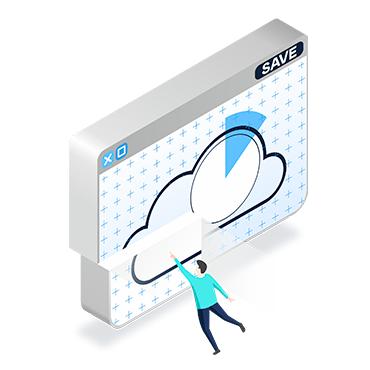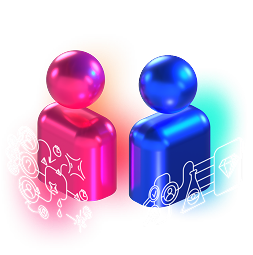SDK vs API: What is the difference?
Updated 21 Jul 2022
Knowing the difference between an API (Application Programming Interface) and an SDK (Software Development Kit) and when to supply each is critical for creating a developer ecosystem. These two technologies, as well as their synchrony, are the driving force behind online communication and the implementation of third-party APIs in today’s development ecosystem.
As a result, it’s important to understand what we’re talking about when we say APIs and SDKs. In this article, we will attempt to define both in a comprehensive manner while providing a detailed explanation of the difference. We will also show you how an API provider may use these tools to improve their offering and end developer usability.
API Definition
An API is essentially a way for software to communicate with other software. API stands for Application Programming Interface, and it is crucial to its functionality. Consider an API to be a section of code that allows two very different languages, or instruction sets, to be translated and transferred for mutual comprehension.
API development is vast as APIs come in a variety of sizes and shapes. In order to transform user commands into usable functions, request data from servers, render that data into a readable manner for the user, and check the performance of their queries, the browser that a reader would likely use to explore a comprehensive website requires a number of API sets.
An API is used even for something as simple as copying and pasting on a computer. When you copy text, a keystroke is converted into a command, data is stored in RAM on the clipboard using an API, data is then transferred from one programme to another using the same API, and data is eventually rendered when pasting using yet another API.
The API serves a slightly different purpose on the internet. Web APIs enable interaction between different systems, usually for specific purposes. When a user interacts with Twitter, for example, they utilize an API to store data, tweet, follow a user, remove tweets, and so on. Finally, a web API is nothing more than a set of instructions, similar to a computer API, but for the web.
The fact that APIs ensure consistency is maybe the most crucial benefit. The computer was a wild west of orders and instructions in the early days of computing, loosely programmed and rarely documented. APIs have enabled consistent code in stable contexts, allowing for reproducible functions to be delivered the same way every time a request is given, with predictability and reliability.
SDK Definition
SDK stands for ‘Software Development Kit,’ which if taken verbatim, is an apt and simple way to think about it. Consider constructing a model automobile or plane. This model requires a whole set of things, including the kit pieces themselves, the tools needed to assemble them, assembly instructions, and so on.
An SDK, sometimes known as a devkit, is a collection of tools, libraries, appropriate documentation, code samples, methods, and/or guidance that enable SDK developers to construct software applications for a certain platform. If an API is a set of building bricks that allows you to create something, an SDK is a full-fledged workshop that allows you to create well beyond what an API would enable.
SDKs are the starting point for practically any software that a modern user may encounter, so it’s safe to say that SDK development is also extensive. Many programs, from the web browser you use to the video games you play at the end of the day, were designed with an SDK first, even before an API was used to interface with other apps.
What’s the difference between APIs & SDKs?
Simple explanation:
|
|
API |
SDK
|
| Characteristics |
Light, quick, and frequently specialized |
More durable, frequently includes numerous utilities |
| Purpose |
Integrates and connects software |
Contains several different development tools |
| Use Case |
Used to provide particular functions to applications |
Used to develop new applications or include a variety of capabilities in a single package |
|
Examples
|
An API is a collection of libraries that make up the base language and are available for use right away |
A development toolkit called an SDK makes it easier to use an API |
| There are APIs for almost every conceivable area, including SMS, location services, and finance |
Developers may access all the resources they need to create applications by downloading the SDK |
| An SDK is not necessarily required to use an API |
SDKs frequently include one or more APIs and aid in their implementation |
| An API is created specifically to serve the aim of enabling communication between programs |
An integrated platform with a collection of tools to build these applications is known as an SDK |
| The only telephone lines used for in- and outside-the-house communication are represented by an API |
The entire house is represented by the SDK, including all of the rooms, furnishings, telephone connections, and other elements |
Detailed explanation:
For non-developers, the preceding can be perplexing. Because both API and SDK may connect software, they appear to be quite comparable on the surface. However, it’s crucial to remember what SDK stands for: software development kit (devkit for short). One or more APIs, as well as critical functionality, may be included in the SDK. However, the API is only one component of an SDK. Housing a better understanding, consider the devkit as a larger “container” for a variety of SDK tools.
An API is a collection of libraries that make up the main programming language that you may use right away. An SDK is a software development kit that makes it easier to use a specific API. Both are theoretically ways programs for interacting with and managing resources offered by another piece of software. Among other things, that software could be an end-user application, an OS service, or a web service.
To summarize, an API is an interface to a service, whereas an SDK is a collection of tools or pieces designed for a specific purpose. Use an API if you wish to add some specific capabilities to your development project. If you’re beginning from scratch, on the other hand, an SDK will offer you the necessary tools and building pieces.
The house analogy is another typical non-technical example of SDK vs API. An SDK is a representation of a whole house. Rooms, furnishings, telephone lines, aerial cables, and other items. The aerial wires that are needed to bring communication in and out of the house, for example, would be represented by API, with your TV set serving as the interface.
There is also a compelling financial justification for releasing solutions like SDK. By letting other businesses use your technology via your SDK, you may expand your brand’s reach to include a larger range of people and industries. In a market where word of mouth and access to new information travels quickly, being willing to share the foundations of your technology with others might help you build a better reputation. It only takes providing a working SDK tool for businesses and their development teams to implement and integrate with other apps.
When to use an API and when to use SDK?
When creating applications, developers always use the SDK. Furthermore, there are SDKs that are tailored to specific platforms; for example, an Android SDK is tailored to Android applications. Through numerous methods and protocols, the API is utilized to interface with external programs or platforms.
Engineers will use the SDK for developing any software application. The API integration will be used when you need to interface with other third-party service providers (application/platform). Which might be included in the SDK.
API vs SDK: Conclusion
To summarize, APIs serve as a communication bridge between distinct applications, whereas an SDK provides a set of tools and facilities for developing software programs. SDK contains API, sample code, technical papers, tools, and utilities, while API merely contains specifications and explanations of functions. The SDK contains libraries that may be used to construct software programs, and the API explains the parameter and return value types that should be provided to the function.



